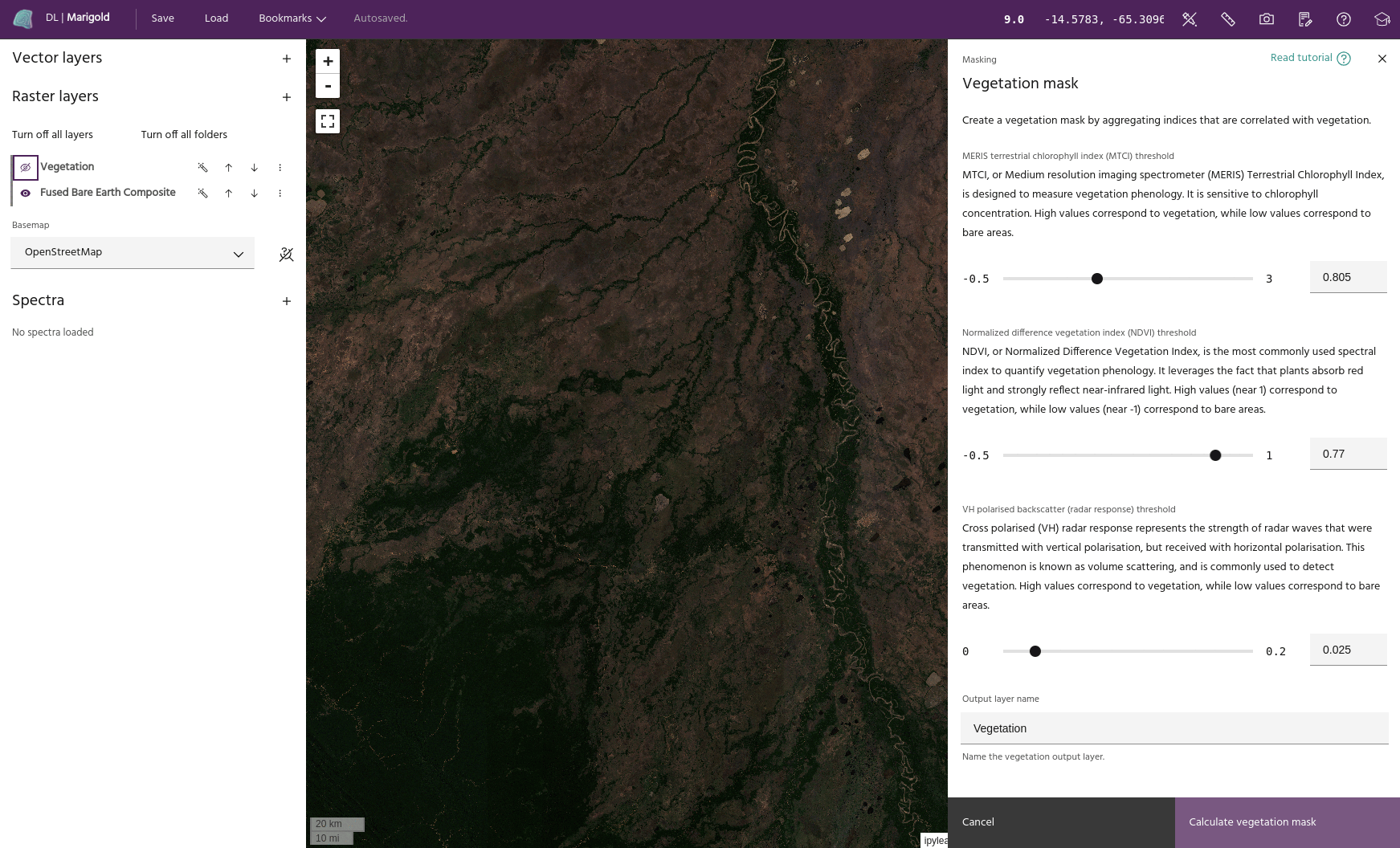Vegetation mask
The Vegetation mask tool is used to identify and mask out vegetation in a layer when you do not want to consider vegetated areas in your analysis. Creating a vegetation mask is often one of the first steps in a mineral exploration workflow as vegetation conceals the underlying geology.
Usage
- Use the MERIS terrestrial chlorophyll index (MTCI) threshold slider in the preview pane to detect and mask out healthy vegetation. The lower the value, the more vegetation will be masked out.
- Use the Normalized difference vegetation index (NDVI) threshold slider to accentuate differences between reflected near infrared (NIR) light, which plants generally don't absorb, and red light, which plants generally do absorb as a source of energy and photosynthesis. Because vegetation produces a high NDVI value and bare areas produce a low value, setting a low threshold value mask out more vegetation.
- Use the VH cross polarized backscatter (radar response) threshold slider to take advantage of a phenomenon called deep polarization that occurs when radar waves hit vegetation. As with the other indices, a low threshold setting will mask out more areas and a high threshold will mask out fewer areas.
- To save your vegetation mask, click the Calculate vegetation mask button at the bottom of the preview pane. The mask will now be available to apply to a layer using the Apply a mask tool.

Tip
As you adjust the threshold sliders, at least two out of three of the indices must agree that a given pixel is vegetation for it to be marked as such in the output mask.